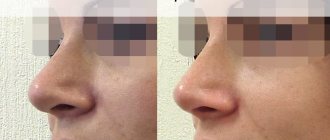Lately, plastic surgery is no longer perceived as something out of the ordinary. They are performed not only on women, but also on men (approximately 17% of all patients of plastic surgeons). Of course, aesthetic surgery does not always correct subjective defects in appearance - it solves very specific problems (for example, cleft lip, cleft palate, various injuries, etc.). But there are still much fewer of the latter, compared to those who simply want to improve their appearance or figure.
Facelift methods
Spacelifting
Spacelifting is a plastic surgery during which the tissue under the facial muscles is restored. The chin, cheekbones, nasolabial folds and outer corners of the eyes are corrected. An incision is made with a scalpel from the ear to the temple along the hairline, using an endoscope. At the end of all manipulations, sutures and a fixing mask are applied. The result achieved by this method of facial plastic surgery lasts up to 15-20 years. The rehabilitation period is ten days.
Smas-lifting
SMAS-lifting, during plastic surgery, this method corrects not only the skin layer, but also the muscle frame that is located underneath it. Due to this, a good effect is achieved that allows you to significantly rejuvenate the face. A facelift using this method is a serious plastic surgery, during which incisions are made along the hairline from the temple to the lobe, while the skin is stretched and its excess is excised. As a result, the face changes significantly, and the achieved effect lasts for about 12-15 years.
S-lifting
S-lifting is a plastic surgery in which the surgeon makes small incisions in the facial skin with a scalpel. This allows you to achieve natural facial rejuvenation and work on its deep composition. The essence of the operation is to work on the lower third of the face, where liposuction of the neck and chin is performed. Through small incisions, the surgeon pries out the soft tissues of the face and attaches them to the zygomatic periosteum using hanging sutures. The cheeks are also processed to smooth out the nasolabial fold, and excess skin is excised. This type of lifting is not suitable for patients with grade III and IV facial skin ptosis.
Mini-lift (MACS)
Mini-lift (MACS) is a facial plastic surgery aimed at combating problems associated with the middle and lower third of the face. During this operation, the surgeon makes an incision of about 2.5 cm with a scalpel along the scalp behind the ear to the lobe. In this case, local or superficial anesthesia of this area is given in advance. The result achieved by this correction method lasts for up to 3 years. The rehabilitation period lasts about ten days.
Endoscopic lift (seamless facelift)
It is the least traumatic method of performing a facelift, because during plastic surgery performed by this method, the surgeon makes small incisions along the hairline through which self-absorbable plates are inserted. They help move soft tissue to the desired area and secure it. After this, drainage tubes are inserted into the holes, and a bandage is applied to the face, which the patient will have to wear for about two weeks. As a result, wrinkles will be smoothed out and your face will look younger. The achieved effect after a facelift using this method will last for about 15 years.
Circular (deep) lift
A circular lift or ridectomy is a classic method of surgical facial skin lifting, during which an incision is made in the skin from the temple to the auricle. If chin correction is necessary, an additional incision is made under the lower jaw. In this case, the plastic surgeon removes excess subcutaneous fat and skin. The skin is then tightened and stitches are placed. As a result, a whole range of problems associated with facial aging is solved. The effect achieved from a facelift using this method lasts for a period of 7 to 10 years.
Platysmoplasty
Platysmoplasty is a plastic surgery that involves tightening the neck muscle and fixing it in a new position. Due to this, the folds on the neck are smoothed out, the double chin is eliminated and the angle between the neck and chin becomes more pronounced. During this operation, the plastic surgeon makes a 4 cm long incision along the natural cervical groove and pulls the neck muscle towards the center and to the sides. Excess skin tissue is excised. The achieved result after platysmoplasty lasts for a period of five to ten years.
Cheiloplasty
This plastic surgery was developed to surgically correct the shape of the lips, which may be necessary for the patient due to congenital or acquired defects. Cheiloplasty is performed under local anesthesia. The surgeon makes incisions along the upper and lower lip contours, excess skin is excised, after which microsutures with self-absorbable threads are applied, which dissolve after a few days. After the manipulation is completed, ice is applied to the patient’s lips.
Malyarplasty
Plastic surgery that is aimed at changing the shape of the cheekbones. During malarplasty, the surgeon makes an incision about 1 cm long in the oral cavity, temporal region or behind the ears. To increase the volume of the cheekbones, solid silicone implants, which have the shape of an oval or ellipse, are inserted under the skin. To reduce the volume of the cheekbones, the bone is ground. During the rehabilitation period for two weeks, the patient will need to eat only liquid food and rinse his mouth with a special solution.
Cervicoplasty
This plastic surgery helps eliminate sagging chin area. During cervicoplasty, the plastic surgeon moves only the skin without affecting the muscles, this is the main difference between this operation and platysmoplasty. During this operation, the doctor makes an incision near the ears and thyroid gland, then peels away the dermis and stretches it. Excess skin is excised. Most often, this operation is combined with a facelift and liposuction, so the result is the elimination of a double chin and folds of skin on the neck. Cervicoplasty is suitable for patients over 45 years of age.
1
/
Sources
- Bentounsi Z., Sheik-Ali S., Drury G., Lavy C. Surgical care in district hospitals in sub-Saharan Africa: a scoping review. // BMJ Open - 2022 - Vol11 - N3 - p.e042862; PMID:33766839
- Azimov RH., Kurbanov FS., Chinikov MA., Shemyatovskij KA., Tarkhani MKM., Dzhumanov AK. . // Khirurgiia (Mosk) - 2022 - Vol - N2 - p.73-79; PMID:33570358
- Demiroz A., Aydin S., Yalcin CE., Arslan H. Risk Assessment of Surgical Interventions Performed on Non-Infected Patients During COVID-19 Pandemic. // Cureus - 2022 - Vol12 - N11 - p.e11682; PMID:33391918
- Veith J., Collier W., Simpson A., Magno-Padron D., Mast B., Murphy RX., Agarwal J., Kwok A. A Comparison of Common Plastic Surgery Operations Using the NSQIP and TOPS Databases. // Plast Reconstr Surg Glob Open - 2022 - Vol8 - N5 - p.e2841; PMID:33133901
- Kotov SV., Iritsyan MM., Raksha RI., Magnaeva AS., Zhilov MS., No II., Alekberov EM., Bazarkin AK. . // Urologiia - 2022 - Vol - N4 - p.27-35; PMID:32897011
- Singh S., Podila S., Pyon G., Blewett J., Jefferson J., McKee R. An analysis of 3,954 cases to determine surgical wound classification accuracy: Does your institution need a Monday morning quarterback? // Am J Surg - 2022 - Vol220 - N4 - p.1115-1118; PMID:32359689
- Lin A.Y., Yarholar L.M. Plastic Surgery Innovation with 3D Printing for Craniomaxillofacial Operations. // Mo Med - 2022 - Vol117 - N2 - p.136-142; PMID:32308239
- Araki Y., Uda K., Yokoyama K., Kanamori F., Mamiya T., Nishihori M., Izumi T., Tanahashi K., Sumitomo M., Okamoto S., Wakabayashi T., Natsume A. Surgical Designs of Revascularization for Moyamoya Disease: 15 Years of Experience in a Single Center. // World Neurosurg - 2022 - Vol139 - NNULL - p.e325-e334; PMID:32298834
- Ceccarino R., Di Micco R., Cappelletti R. Aesthetic Breast Surgery Under Cold Tumescent Anesthesia: Feasibility and Safety in Outpatient Clinic. // Ann Plast Surg - 2022 - Vol83 - N4 - p.384-387; PMID:31524728
- Notini L., Gillam L., Spriggs M., Penington A. 'Operating is the easy part': Surgeons' decision-making processes and responses to parental requests for elective pediatric appearance-altering facial surgery. // J Plast Reconstr Aesthet Surg - 2022 - Vol72 - N8 - p.1379-1387; PMID:31104908
Types of facelift
Upper facelift
An upper facelift is a plastic surgery in which a plastic surgeon works on the skin in the upper part of the face, particularly the forehead and eyebrows. The skin tightening incision is made along the hairline. As a result, wrinkles on the forehead are smoothed out and eyebrows are positioned higher.
Medium facelift
A mid-facelift is a plastic surgery in which a plastic surgeon works on the skin in the middle part of the face, namely the nasolabial folds, cheeks and wrinkles around the mouth. In this case, the incision for a facelift is made in the temporal part or above the lip. As a result, wrinkles are smoothed out and the face looks younger.
Lower facelift
A lower facelift is a plastic surgery that is aimed at the area of the lower jaw, chin and neck. A skin incision occurs along the jaw line just below the chin. The result of this operation is the elimination of the double chin and tightening of the skin of the neck.
Plastic surgery at MedicCity
The MedicCity clinic employs wonderful specialists, true masters of their craft.
We offer a full range of plastic surgeries:
- blepharoplasty (eyelid surgery);
- forehead and eyebrow lift (front lift);
- neck and chin lift;
- circular facelift (facelift);
- otoplasty (correction of ear shape);
- rhinoplasty (changing the shape of the nose);
- softlifting;
- breast correction (lift), correction of areolas and nipples;
- mammoplasty (breast surgery);
- reduction mammoplasty (breast size reduction);
- endoprosthetics, augmentation mammoplasty;
- ligature plastic surgery (thread facelift);
- liposuction;
- liposuction for gynecomastia;
- brachioplasty (arm skin tightening);
- abdominoplasty (tummy tuck);
- correction of the buttocks (lifting the buttocks and thighs), etc.
If necessary, several surgical procedures can be performed during one intervention. Such combined operations, also called simultaneous, are successfully performed by the best plastic surgeons at MedicCity.
The safest and most effective methods of aesthetic medicine, both modern innovative and classical, have been used in the department of plastic surgery and cosmetology at MedicCity. We know exactly how to take care of your beauty!
Carrying out a facelift
Before you finally decide to undergo a facelift, you should consult with a specialist, who will have to tell you in detail about all the intricacies of the operation, and also prescribe the patient to undergo a number of tests, such as: a general blood test, urine and stool, biochemical blood test; blood test for HIV, hepatitis, syphilis, liver and kidney tests, as well as a blood test for sugar levels, ECG and fluorography. The patient should definitely consult with an anesthesiologist. Only after the results of all tests have been carefully studied by specialists is a date set for a facelift. It is recommended to stop drinking alcohol and smoking cigarettes 2 weeks before surgery. And also stop taking medications that thin the blood and affect hormonal levels. After the preparatory stage, the patient arrives at the clinic, where he is given a room in the hospital, where he can change clothes and wait for the operation to begin. When everything is ready, the patient is invited to the operating room. After which the patient’s facial skin is disinfected and special markings are applied with a marker. Then the administration of anesthesia begins. When the painkillers take effect, the plastic surgeon begins performing one of the facelift methods. It depends on the problem being solved and the area affected by the face: upper, middle or lower. When all manipulations with the facial skin are completed, stitches and a bandage are applied. The total procedure time takes from 1.5 to 6 hours. After this, the patient is sent to the hospital, where he will stay for several days under observation. A prerequisite is compliance with all doctor’s recommendations during the rehabilitation period.
Facelift results
Immediately after a facelift, the result will be difficult to evaluate, because swelling and bruising will be present. A few days later, after the patient is sent home for rehabilitation, it will be necessary to go to the clinic for bandaging or removal of stitches. It depends on the complexity of the operation and the depth of the impact. During recovery, the patient may feel pain and discomfort; for this, the doctor will prescribe painkillers that will help make this period more comfortable. An important condition for successful healing of wounds from surgery is compliance with conditions that prevent infection from entering the wound. The patient will be able to evaluate the first results after 4 weeks. The full rehabilitation period lasts about 6 months. It is after this time that it will be possible to evaluate the final result of the facelift. Wrinkles will smooth out, jowls, double chin and sunken cheeks will disappear. The face will look much younger, which cannot but please the patient who has decided to have a facelift.
Contraindications for facelift
- Oncology;
- The presence of autoimmune diseases;
- Somatic diseases in the acute stage;
- The presence of an infection or virus in the body;
- Presence of facial skin diseases;
- Damage to the skin on the face in the form of wounds, scratches and cuts;
- Poor blood clotting;
- Diabetes;
- Renal and liver failure;
- Fever, flu, ARVI;
- Recent chemical peeling and laser resurfacing;
- Age less than 35 years;
- Menstruation;
- Pregnancy;
- Lactation period.
Discuss this topic on the Plastic Club forum in this topic
Rehabilitation after a facelift
Reviews
Irina, 52 years old
“It was easy to decide on the operation. Firstly, I had previously undergone many quite painful procedures in cosmetology. And secondly, I could no longer look at myself, especially in photographs and videos. Something clicked and it went. I had a regular lift without a forehead (I was scared of the incisions below the hairline of the forehead). And at 48 years old, having surgery seemed like the norm to me. And the doctor assured that there would be no severe constrictions. I didn't deceive you. Rehabilitation went surprisingly quickly. It was hard not to go outside (well, this is a purely psychological factor). I completely began to forget the negative aspects and, to be honest, I no longer remember some of the details of recovery. And now I’m happy as a pug. There is an incentive to maintain both skin condition and weight. Someone said: “A woman does not hide her age if she is confident in herself.” Maybe I didn’t quote it exactly, but I tell everyone with pride - I’m 52! It's nice to see genuinely surprised faces. The store offers everything for youth.”
02-07-2012
Galina, 46 years old
“I am 46 years old, I decided to undergo surgery with Dr. Mamedov, temporal endolifting, middle endo zone and Smas lower zone. I’m doing well, the facelift went great. There is no severe pain after the procedure, especially since the pain is constantly numbed. I recovered well from the anesthesia. I fell asleep and didn’t notice - it was easy, I woke up the same way. I myself didn’t expect such a result, that is, I knew that I would look younger, but why so... Elchin Velievich is simply a magician. Traces from the operation are nowhere to be seen. Sensitivity appeared in the second month after the operation. The facial expressions are also okay. I live and enjoy life. I am endlessly grateful to Elchin Velievich.”
04-08-2014
Maria, 45 years old
“I went for a consultation when I was 35 years old, they already told me what I needed. Now I'm 45 and I'm mature. As for rehabilitation: there is no need to stay at home for 4 months, because... after three weeks you can safely go out in public, strangers will definitely not notice anything. Relatives and friends will no doubt guess that something has changed in you. And after a month you can easily go to work, or even better after 1.5 months. I came to work a month later, everyone noticed my changes, but I said that I did special procedures, Botox, of course, did not admit about my surgical intervention. Everyone believed it, even the very hardened women! Although it is very painful to wash your face, put on makeup and put cream on your face, this is temporary. Patience and more patience! I don't regret anything. The result is obvious, I'm satisfied. I can’t imagine how I would have felt if I hadn’t taken the risk.”
13-02-2015
More
Removing Bisha's lumps
Source: @angelinajolie_offiicial
Removing Bisha's lumps is the first thing that comes to mind when looking at Angelina's cheekbones. She has them so expressive that it seems that she couldn’t do without plastic surgery. Many celebrities remove fat packs from their cheeks to get rid of chubby, teenage-like cheeks.
But with age and changes in weight, cheekbones can become more expressive in a natural way. This is probably what happened to Jolie. Several years ago, when her mother died, and then the divorce proceedings began, the actress lost weight to a critical 43 kilograms (some sources indicated a weight of 38 kilograms). Since then she has gained some weight, but she still remains thin. Therefore, even specialists cannot say for sure whether cheekbone surgery was performed. Some believe that the operation took place, but at a younger age - before 30 years. It was then that significant changes occurred in Angelina’s appearance. During the filming of the film Maleficent, the actress was given makeup that further emphasized her thinness and sharp cheekbones.
Question answer
At what age can surgery be performed?
There is no specific age for a facelift. If a woman begins to notice any changes, for example, drooping tissue, loss of skin elasticity, or a constant “tired look,” then she is already a patient of a plastic surgeon, because There are all indications for lifting. Also, there is no certain age after which plastic surgery becomes impossible. The only contraindication is health status.
How long will the results of a facelift last?
The durability of the result depends, first of all, on the individual characteristics of the facial structure and the properties of the patient’s skin. On average, the effect lasts for 7-10 years. After this time, it may be necessary to perform repeated or corrective surgery, depending on the type of face and the nature of the primary intervention. On the other hand, the effect of such an operation lasts a lifetime. Since after any number of years a person after an effective operation looks better than if this operation had not occurred in his life.
Is it true that a facelift of the face and neck is best done at 35-40 years old?
What matters is not how old you are, but the condition and position of the tissues of your face and neck. The presence of indications for surgery is the main criterion for the timing of its implementation. However, it has been noted that with preserved levels of female sex hormones, recovery in the postoperative period is easier and faster.
Indications
Appearance adjustments are usually decided upon by:
people who are dissatisfied with irregular facial features - irregular nose shape, large ears, etc.;- people who, after injuries or unsuccessful plastic surgeries, are left with unaesthetic scars that disfigure the face, asymmetry on the face, changes in the natural shape of the nose and ears. Lip. Towards ideal proportions;
people who experience age-related changes, the skin becomes inelastic and wrinkled, the oval of the face sags, fine and deep wrinkles appear, a double chin appears, eyelid ptosis and other age-related changes;- women whose figure has changed after pregnancy and childbirth, and who want to quickly get into shape.
Plastic surgeons and clinics specializing in facial plastic surgery:
Mamedov Rusif Plastic surgeon
Specialization
- Mammoplasty
- Rhinoplasty
- Facial plastic surgery
Comments and questions
Galina 07/09/2017 at 05:53 # Reply
Hello. I am 28 years old. Is it possible to undergo an endoscopic facelift of the middle and upper third of the face at this age? Is it possible to get tested at the clinic? What will be the cost of such an operation?
Anna 05/21/2018 at 12:47 # Reply
Good afternoon I am interested in spacelifting surgery. Which surgeons know this technique and what is the cost?









